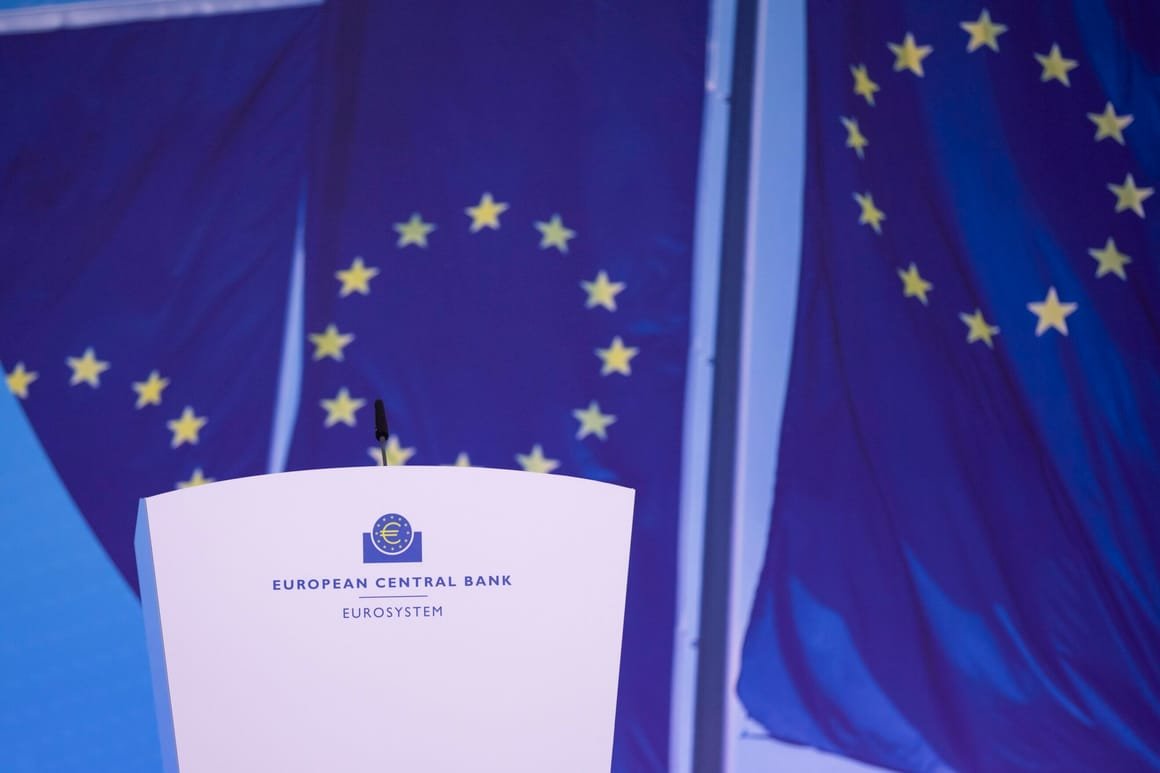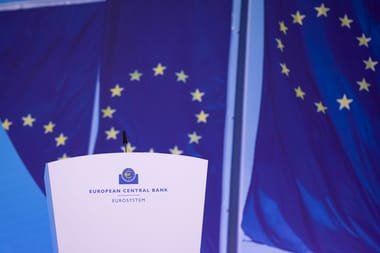As Berlin and Paris flounder, expect a stronger lead from Frankfurt.

FRANKFURT — The European Central Bank is gearing up for another interest rate cut on Thursday and may also take a stronger line on signaling future rate cuts, at a time when political chaos in Europe’s two biggest economies is overshadowing an already grim economic outlook.
The ECB is expected to cut its key deposit facility rate by a quarter point for a fourth time this year, bringing it down to 3 percent. In addition, many expect a change of messaging from President Christine Lagarde to bolster confidence in future rate cuts next year, aiming to stop the eurozone sliding into stagnation amid policy drift in Germany and political gridlock in France.
The central bank can afford to cut because inflation has become less of a concern: An increase to 2.3 percent in November has not changed the basic view in Frankfurt that the battle is being won.
That view is likely to be reaffirmed on Thursday by new macroeconomic forecasts from the ECB’s staff. In September, the Bank’s economists said they expect inflation to average 2.2 percent in 2025 and 1.9 percent in 2026, and growth to pick up next year to 1.3 percent. The new forecasts, said ING’s Carsten Brzeski, “Will be very similar to what we saw in September … and based on those projections a larger cut will not be justified.”
That will also reflect the fact that, so far, hard economic data has not borne out the extreme pessimism visible all year in the region’s business surveys. The eurozone economy grew by 0.4 percent in the third quarter and, although that was thanks largely to extraordinary and seasonal factors such as the Paris Olympics, many policymakers remain convinced that the combination of rising real wages and falling borrowing costs will keep it on track.
Markets consequently view the chance of a bigger, half-point rate cut on Thursday as remote: Most policymakers have already indicated they prefer a steady and gradual pace of policy easing.
“I don’t think that it will be such a difficult decision in December,” Croatia’s central bank governor Boris Vujčić told POLITICO.
“There’s a huge amount of policy uncertainty that is not necessarily positive for investments,” said HSBC analyst Fabio Balboni. “But I’m not sure how much an acceleration of rate cuts can do on that front.”
The case for a larger cut
However, for some pundits, the worrying economic outlook is a reason for the ECB to consider a larger cut. Latvian central bank governor Mārtiņš Kazāks told local media last week the Council will “definitely” discuss the option. More up-to-date economic indicators are raising the alarm that growth might be already at a standstill, even before the expected onslaught of trade tariffs from United States President-elect Donald Trump.
Business confidence in both France and Germany has been hurt by government collapses and the knowledge that painful policy choices lie in store for whomever forms the next government. Consumer confidence, having risen steadily over the last year, also turned down in November across the eurozone.
Some are already arguing that this means the ECB needs to do more. The central bank governors of France and Italy, in particular, have warned in recent weeks about the possible return to the days of low or zero growth and a prolonged undershoot of the 2 percent inflation target.
“The European economy is already very weak and if Trump will apply tariffs to European goods, growth will decline more,” Vitor Constancio, a former ECB vice president, told POLITICO. “Inflation will continue to decline, which means that a forward-looking monetary policy must decide several interest rate cuts, starting with 50 basis points in the next meeting.”
Even if that is too much to expect in the near term, doves could still use such arguments to extract a significant concession on Thursday, in the form of a substantial shift in the ECB’s communication.
Having stressed its intention to keep policy restrictive for as long as needed in the last couple of years, the Bank will likely highlight its intention to move to a more neutral stance, where interest rates are no longer holding back the economy, said Danske Bank economist Piet Christiansen.
“With inflation at target, it becomes a growth question,” he noted.
Already, the heads of the Italian and the Finnish central banks have called for the ECB to give clearer signals that it will continue to cut rates next year and drop the “data-dependency” doctrine that has forced it to make policy on the hoof since the inflation surge started in 2021.
“‘Directional guidance’ would help to stimulate consumption and investment, thereby reducing the likelihood of a weak-demand scenario,” Bank of Italy Governor Fabio Panetta said last month.
The ECB’s chief economist Philip Lane, meanwhile, acknowledged that such a shift could happen in the coming months as residual doubts about inflation fade.




